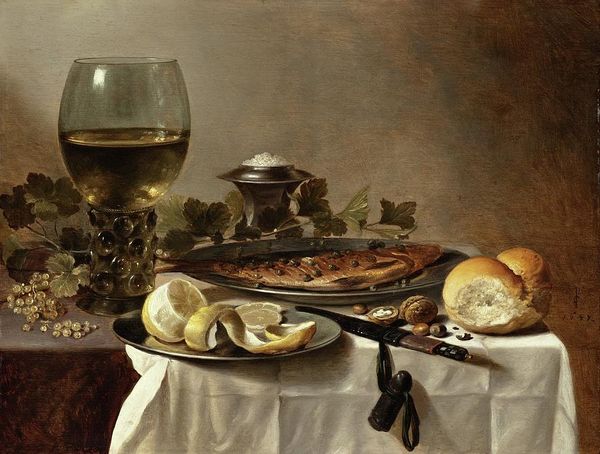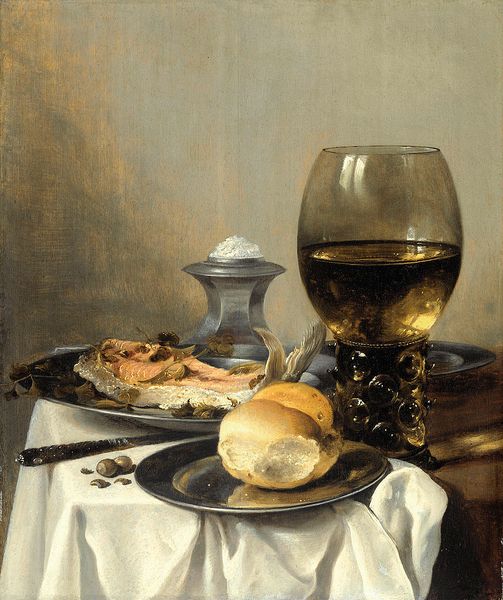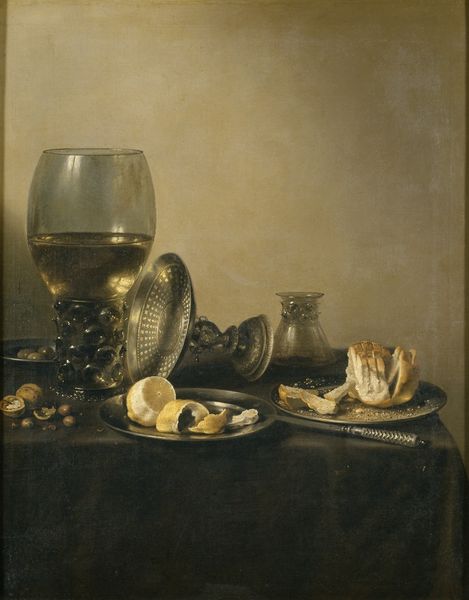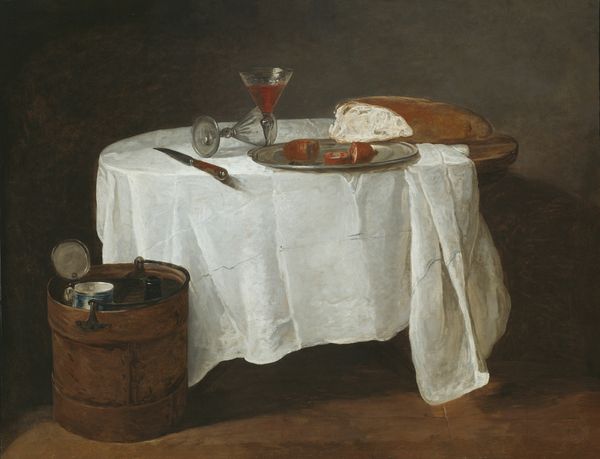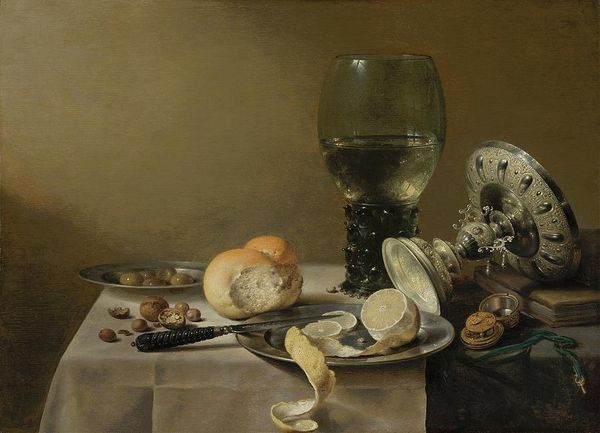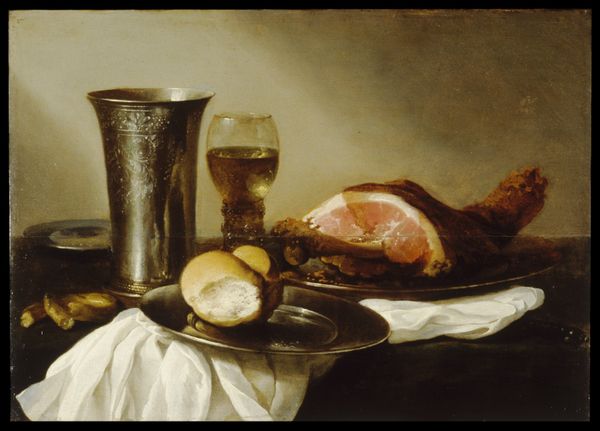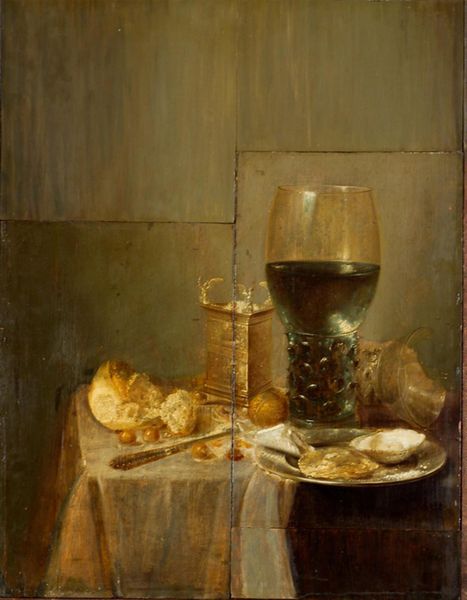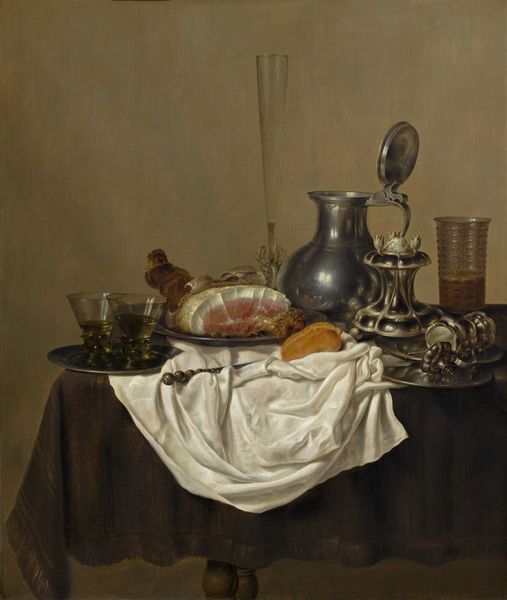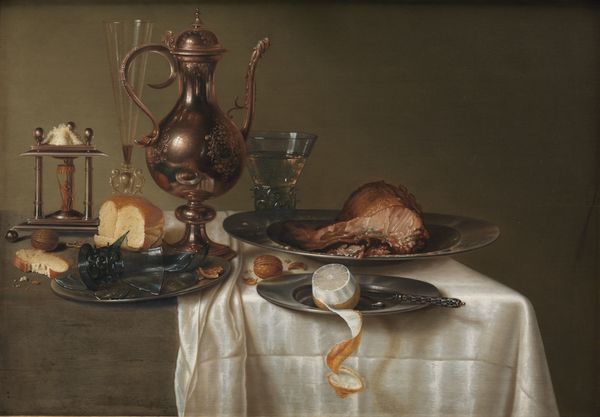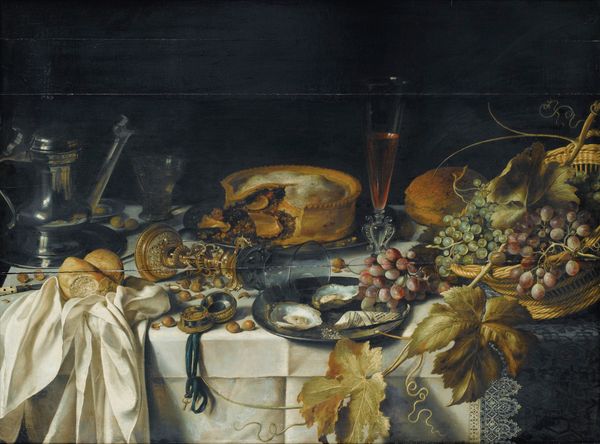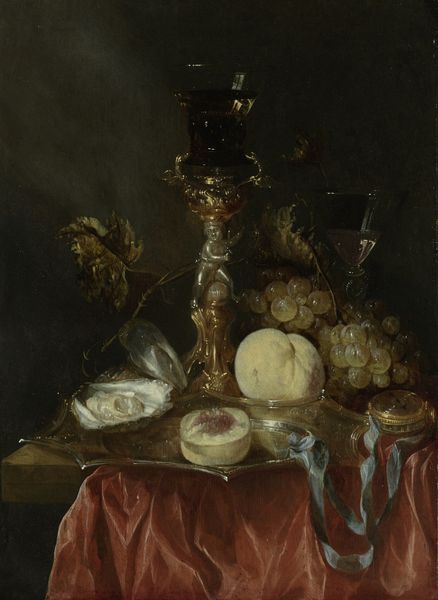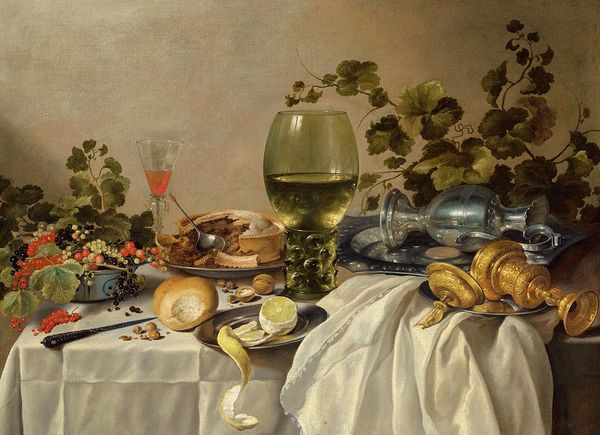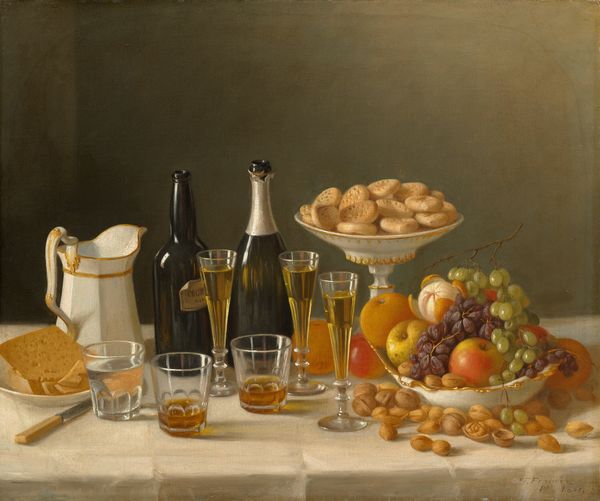
painting, oil-paint
#
baroque
#
dutch-golden-age
#
painting
#
oil-paint
#
genre-painting
#
realism
Dimensions: height 60 cm, width 82.5 cm, depth 5 cm
Copyright: Rijks Museum: Open Domain
Curator: Jan Albertsz. Rotius, a painter working during the Dutch Golden Age, created this sumptuous still life somewhere between 1644 and 1666. It's rendered in oil paint, characteristic of the era. Editor: My first impression is the dramatic light. It falls starkly across the crab, illuminating it while casting a shadow that suggests opulence and perhaps…decay? There's a real sense of tangible luxury contrasted with inevitable ephemerality here. Curator: Absolutely. The materiality is key. Notice the reflective surfaces: the silver cup, the glass, the pewter plates, all rendered with incredible detail. The texture of the tablecloth itself tells a story about the production and consumption of luxury textiles in that era. Think about the guild systems that regulated the quality of the linen, the trade routes that brought the silver into Holland... Editor: And how this consumption would play out visually in society. These aren’t just pretty things; their arrangement implies wealth, status, good taste. But where would a painting like this be displayed? Surely not everyone had a dining room to adorn with scenes of... perfectly arranged seafood. Curator: Likely commissioned for the home of a wealthy merchant or official, intended to impress visitors and demonstrate prosperity. But the inclusion of that peeled lemon and the crab—delicacies, certainly, but also prone to spoiling—introduces an element of vanitas, a subtle reminder of mortality amidst the display of earthly goods. The means to consume does not render death moot. Editor: The peeling lemon is a wonderful touch—it's not just a detail. You can almost smell the tartness. But it strikes me how "realistic" paintings like this, in our time period, feed this sense of reality by also serving this strange function in perpetuating social hierarchies— the patrons must be of considerable wealth to fund an endeavor as refined as this one. Curator: And the cost of materials should not be overlooked either; pigments especially could be extremely expensive. The market value for the lapis lazuli to create a vivid blue tone could surpass even silver and gold at this time. The investment in the scene can imply an unspoken message to any patrons and to all of society for years to come. Editor: This work, then, encapsulates the tensions of its time: celebrating material wealth while acknowledging its transience, showcasing craft while hinting at underlying socio-economic structures. Curator: Precisely. And looking closely at brushwork, and materials used is equally enlightening. Editor: A fascinating insight into both the artistry and the world it inhabited. Thanks to its still relevant commentary on power and decay.
Comments
No comments
Be the first to comment and join the conversation on the ultimate creative platform.
